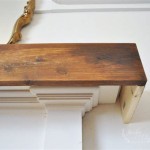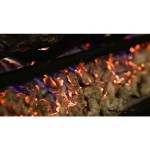Marble Slab for Fireplace Hearth: A Timeless and Functional Choice
A fireplace hearth serves as both a practical and aesthetic focal point within a living space. Selecting the appropriate material for a hearth requires careful consideration of durability, heat resistance, and visual appeal. Marble, with its inherent beauty and robust properties, presents a compelling option for fireplace hearth construction. This article explores the advantages of using marble slabs for fireplace hearths, detailing crucial aspects such as material properties, design considerations, installation, and maintenance.
Marble is a metamorphic rock composed primarily of calcite or dolomite crystals. It is formed under intense heat and pressure, resulting in a dense, durable material with distinctive veining patterns. The veining, caused by mineral impurities, adds character and visual interest to each marble slab, making it a unique architectural element. Beyond aesthetics, marble offers several practical advantages for hearth applications.
Heat Resistance and Safety
One of the primary functions of a fireplace hearth is to provide a non-combustible surface that prevents sparks and embers from igniting surrounding flooring or materials. Marble possesses excellent heat resistance, capable of withstanding the high temperatures generated by a fireplace. This property is crucial for ensuring the safety of the home and preventing potential fire hazards. While marble can become hot to the touch when exposed to direct flame, it will not ignite or contribute to the spread of fire. Furthermore, marble’s slow heat conduction means it won’t rapidly transfer heat to adjacent combustible materials, providing an added layer of safety.
Different types of marble may exhibit varying degrees of heat resistance due to their mineral composition and density. It is generally recommended to consult with a stone supplier or installer to determine the suitability of a specific marble variety for a fireplace application. Factors such as the fireplace's heat output and the proximity of combustible materials should be taken into account during the selection process. Properly installed and maintained, a marble hearth provides a reliable and aesthetically pleasing fire-resistant barrier.
Aesthetic Versatility and Design Integration
Marble offers a wide range of colors, patterns, and finishes, allowing for seamless integration into various interior design styles. From the classic elegance of Carrara marble with its subtle grey veining to the dramatic contrast of Nero Marquina with its bold black background and white veins, there is a marble variety to complement any architectural aesthetic. Polished marble provides a glossy, reflective surface that enhances the sense of light and space, while honed marble offers a softer, more muted look. A brushed or textured finish can add a rustic or contemporary touch.
The size and shape of the marble slab can be customized to suit the dimensions of the fireplace and the overall design of the room. Large, seamless slabs create a clean and contemporary look, while smaller tiles or mosaics can be used to create more intricate patterns and designs. The edge profile of the marble can also be customized to achieve the desired aesthetic. Options include bullnose, bevel, and straight edges, each contributing to the overall look and feel of the hearth. Careful selection of the marble variety, finish, and edge profile can transform a simple fireplace hearth into a stunning architectural feature.
Durability and Maintenance
Marble is a durable material that can withstand the wear and tear of everyday use. However, it is also porous and susceptible to staining if not properly sealed and maintained. A high-quality sealant should be applied to the marble surface to protect it from spills and stains. The sealant should be reapplied periodically, as recommended by the manufacturer. Regular cleaning with a pH-neutral cleaner is also essential for maintaining the beauty and integrity of the marble surface. Harsh chemicals and abrasive cleaners should be avoided, as they can damage the sealant and etch the marble.
While marble is relatively resistant to scratching, it is important to avoid dragging heavy objects across the surface. Placing a protective mat or rug in front of the hearth can help prevent scratches and scuffs. In the event of spills, it is crucial to clean them up promptly to prevent staining. Certain substances, such as acidic liquids like vinegar or lemon juice, can etch the marble surface if left untreated. With proper care and maintenance, a marble fireplace hearth can retain its beauty and functionality for many years. Professional cleaning and polishing services can also be employed to restore the marble to its original luster.
Beyond the fireplace hearth itself, marble can be used to create surrounds or mantels, further enhancing the overall aesthetic. The combination of a marble hearth and surround creates a cohesive and elegant focal point within the room. The installation of a marble hearth should be performed by a qualified professional to ensure proper support, leveling, and sealing. This will prevent cracking or shifting and ensure the longevity of the installation. Careful planning and execution are essential for achieving a beautiful and functional marble fireplace hearth.

Marble Slab Fireplace Design Ideas

Fireplace Hearth Stone Supplier

Fireplace Stone Reveal Howlett Co

How To Paint A Marble Fireplace Hearth In Four Easy Steps

How To Install A Marble Herringbone Fireplace Surround And Hearth

Easy Diy Marble Hearth And A Fireplace Makeover The Painted Hive

White Marble Fireplace Hearth Design Ideas

China Customized Granite Slab For Fireplace Hearth Suppliers Whole Service Xuri Stone

Modern Fireplace Surrounds To Inspire Your Home

Fireplace Trends Marble What S Hot By Jigsaw Design Group








